Category: Uncategorized

Customer Service Technology & Trends for 2021s
Customers’ experiences have an impact on how they perceive your business and your brand. Service is the core point of your business’s success. Everyone knows the importance of a happy customer that will not only return to you but always give positive feedback and bring new customers along.
Let’s see what’s new in Customer Service Technology & Trends for the 2021s.
Each year customer service and support leaders identify their strategic priorities and investments for the year ahead, but due to covid-19 and its lasting ramifications, things are changing rapidly and it’s important to move along with the new requirements of Customers. Service and support face increased pressure from competitors on the role of the service function in improving operational excellence and growing the business. The main support for effective customer service is a combination of tools, systems, and processes to convert policies into customer satisfaction.
It starts with equipping your agents with all tools that they need to provide a top-notch customer experience, including:
- Up to date software
- Enhanced training
- More accessible customer data
- Specific feedback
- Clear process documentation and flexible guidelines
In 2020 the Customer Service department had to readjust their employees to remote work. This transition had a huge impact on customer service trends in 2021. Remote work will most likely become a more permanent strategy due to the current situation worldwide and the new opportunity of cost savings due to the remote workforce for business owners.
In fact, 89% of UK contact center leaders say that the COVID-19 crisis has changed the industry forever. A recent industry survey supports this view of a long-term work-from-home transition. 35% of contact center leaders now think that their contact centers will become mainly homeworking. And a higher percentage, 58%, think homeworking will be partly optional and partly compulsory.
Either way, the busy on-premise contact center of the past is set to give way to a more flexible and remote work culture.
As for trends, Service became a sales tool in 2021.
Omnichannel communication with customers is a top priority today. Customers want to reach you immediately with great convenience, meaning being able to choose a convenient contact form like live-chat on a business website or have multiple choices of mobile messengers depending on the preferences of the consumer and get an immediate reply independent of the device type. A true omnichannel approach includes the ability to deliver a seamless and consistent experience across a variety of communication channels. So if your company is not operating with omnichannel communication, now is the time to adapt.
Since not all customer service departments work 24-7, developers took it one step further by inventing chat-bots. But this option lost its popularity within a short period of time. Custer’s enjoy interacting with actual human beings since chatbots lack intelligence and are able to solve only the basic requirements of customers, so they are revealed with ease. So creating a chatbot for your customers today should only be to generalize the question of your customer and lead the conversation to a responsible employee or department. It’s also good to have a chatbot to answer the most common questions or to gather contact information to get back to the customer during working hours. They are a necessary asset today as well, but nothing in comparison to actual human interaction.
Let’s not forget about social media. Its popularity increased among some of the largest companies in the world as a way to foster customer communication and share the latest products with its potential customers. Social media is no longer a ‘nice-to-have’ channel, it’s an essential tool. Companies that spread their brand on social media are archiving greater value of new customers and benefits as well as customer satisfaction and increased retention. In 2021, social media will only become more and more important as a tool to share information, communicate with customers, and retain users.
Today the market is growing rapidly, and as customers have more options, service becomes part of the product experience. Companies are focused on customer’s desire for a better customer experience. The E-commerce market was already growing before Covid, but that growth was accelerated by the pandemic to deal with increased demand. More businesses needed more help services from B2B companies.
The world stands right in front of a new era, and we need to make sure to be up to date with all the new features and services to keep our existing customers happy and have new customers join. The world stands right in front of a new era, and we need to make sure to be up to date with all the new features and services to keep our existing customers happy and have new customers join.
Unlike years prior, this new type of conversational commerce is much bigger than just offering live chat. That’s part of it, but consumers now want to be able to connect with your brand immediately on their preferred platform — whether it’s Facebook, WhatsApp, email, etc. The right tools will allow you to deliver a unified customer experience and treat all channels as equal — prioritizing queries based on importance.
As always, customer reviews play a massive role in success
- Quick resolutions
- Helpful and empathetic agents
- 24/7 support
- Being able to use preferred channels
- Proactive support
Summary of trends 2021:
1. Building teams with support agents who can work remotely
3. Providing personalized customer experiences
4. Delivering real-time support through live chat and chatbots
5. Customer-centric success strategies
6. Mastering social media as a support channel
As previously mentioned, we stand right in front of a new era, and there are more changes to come within the near future. For some industries, this means having to change up the whole business plan and readjust or in the worst-case scenario close their business completely.
For them, it means a second chance, and if they play their cards right, a bright future.

7 Key Points For Successful Outsourcing
The outsourcing model has drastically changed during the past few years for good, evolving to providing the best service in every possible way and channel.
Outsourcing, of course, can be a great way to drive your business forward in a more effective and faster environment by allowing you to use your company resources for more profitable ventures.
Every business has different requirements and reasons for outsourcing, but commonly businesses get the most value and productivity out of their outsourcing operations with a well-structured plan and experienced partner.
To help you get started, we worked hard on coming up with these 7 actions to develop an outsourcing plan that moves you forward to success.
Define Clear Goals
Always start with the big picture and deeply understand both strategic and tactical points with all your stakeholders. Defining the level of requirements, clear work descriptions, and internal and external processes are where you should start.
Considering all details around your company goals will help you to prepare your business for better results.

Identify Your Needs
When you’re outsourcing your business, your business needs have to be crystal clear that you create a list of what you are expecting to get from outsourcing your business processes. You should also identify what processes you need to outsource and what your reasons are for doing so.

Evaluate The Risks
Businesses should look to maximize value while minimizing risk when engaging with an outsourcing model, by considering the risk and value associated with the people, process, and systems involved. Prioritizing your needs and evaluating the risks around is always give you the peace of mind you deserve, better safe than sorry.
Create a business plan
Outlining effective responsive communication plans
Set your business budget
Assess the geographical risks

Choose The Right Partner
Most outsourcing companies talk of vast expertise and top-notch talent, but is there any credibility to their words? Choosing the right partner can make boost your business to the greatest success or it can cause management, cultural, and other unseen issues. Here is a short checklist to be done without any further ado.
Communication & collaboration
Business reputation
Cost efficiency
Case Studies
Technical Expertise
Workforce evaluation
Check Infrastructure and technologies

Set Routine Checks
Routine checks do not only make your business trackable but also help you to understand pain points, success stories, and sets the ground to become responsible for all your important business decisions consistently. Especially for outsourced workforces, creating routine control methodologies and reports will increase efficiency.
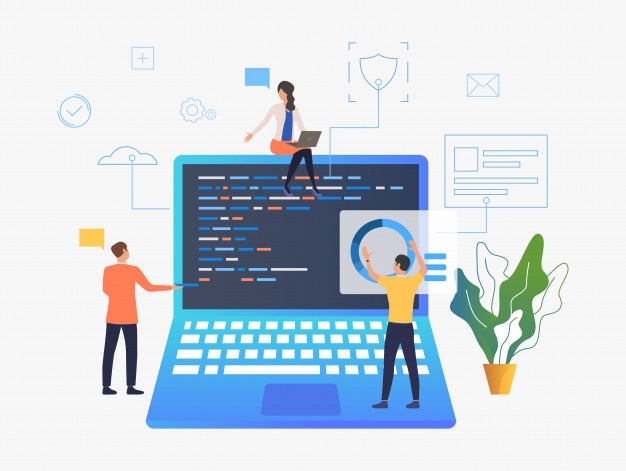
Ongoing Training And Employee Development
Providing training and development to employees allows employers to pinpoint the knowledge and skills they want their employees to have. Training and development programs can educate employees about new skills or provide updates on existing skills to enhance productivity. When you outsource your workforce, the employees will still be representing your company. Your outsourcing partner should understand this sensitive aspect of your and continuously provide required training to all employees.

Outsourcing offers companies the ability to focus on their main competencies and delegate essential tasks to others. This can move companies toward growth by investing more time for leadership to innovate. Outsourcing is a viable solution for all business models at any stage that are looking to scale their businesses and save money in the process.
You might feel overwhelmed by all the information, outsourcing is easy to manage and success-oriented model by choosing the right partner and can be a boost for your business mid-long term strategical plans.
If you are seeking an ideal outsourcing partner? Have more questions before ensuring your decision? Let our team guide and help you with your business success by contacting us.

Why 42% Of Customers Prefer Live Chat
A new breed of customers and B2B buyers are forcing companies to change how they communicate with them. The most challenging of all is that these buyers want to communicate with you fast and easily in real-time.
Leading a successful business means listening to what your customers want.
And in 2021 what they want is live chat.
One of the most effective ways to “chat” with customers is to meet them in a channel on your website via live chat. In independent research, 77% of consumers said they need to talk to a real person before making a purchase online.
In the digital age, competition and buyer empowerment have become stronger than ever, businesses are finally making customer needs and expectations their top priority. Today, more than 48% of customers expect live chat on your website.
Earlier this function was considered as an additional opportunity to phone and email contact but today it is a substantial part of support service that can not be ignored.
If your business strives to be up to date, it has to give customers the ultimate purchase experience. Live chat can generate leads, increase sales and improve the overall customer experience. In fact, live chat is expected to continue to grow by as much as 87% in the next year, and in some industries, chat growth has increased by as much as 150%.
The reason for this increased adoption is because more than half of all customers prefer to chat with someone in real-time and online, rather than contact a company for support.
Live chat enables you to reply to customers immediately. Without a doubt, the first and foremost quality customers demand is quick answers. A major reason why customers use live chat is to have their queries answered instantly, since delayed responses may cause you to lose interest in your brand. Indeed, live chat is an amazing way to connect with customers as well as strengthen their trust in your brand.
You don’t have to wait on email replies, no need to search for phone contact information and wait in line listening to launch music to keep your patience. You don’t need to fill in a call-back form and wait for customer support to reach out to you, hoping to receive the call while it’s still convenient for you to have this conversation.
Today, customers are literally one click away from a fast response of customer service, assisting in purchase or anything they need.
48% of customers say that they prefer live chat over social media, email, and even phone support. Giving customers a way to reach you immediately is beneficial for both parties, and let’s not forget about the convenience of data exchange using a chat.
Real-time messaging is great for onboarding, troubleshooting and nurturing customer relationships. When customers reach out, make sure to have an agent available, or at least include information about the average response time somewhere inside the chat window. You can also use pre-chat surveys, chatbots, and other options.
In fact, the average customer satisfaction using live chat service in the technology industry exceeds 87%. compared to just 61% for email and 44% for phone.
In addition to that, a study by AMA found that live chat can be used effectively throughout the customer journey, including an improvement in:
Brand awareness (+29%)
Early-stage sales development (+32%)
Post-sales customer support (+39%)
All of which leads to an increase in revenue!
Better customer experience through Live-Chat wrap up:
Leading a successful business in today’s society means using Live Chat to Boost Customer Satisfaction. Customers want a fast response and easy data exchange. Customer prefer this kind of communication over
- Phone
- Call back forms
- FAQ
- Social Media

Building The Future Of Connection With Lifelike Avatars.
The world is changing and technology adapts.
Facebook recently showed how their Codec Avatars project is progressing – the results are already impressive.
Lifelike avatars are the way we will communicate within the next 10 years.
These avatars show photorealistic face models that accurately represent the geometry and texture of a person in 3D (i.e., for virtual reality), almost indistinguishable from video.
Video communication and calls are outdated, while VR / AR should take communication to a fundamentally different level. It will have a huge impact on Customer Service – communication is key, imagine being in a meeting with a customer face to face while in real life you’re working from home. And Facebook invests a lot of resources in this: 10 thousand employees work on mixed reality projects, which is almost 20% of the entire state.
Zuckerberg also likes to say that the future of user interfaces is VR / AR.
Telegram and other Facebook competitors cannot be envied: no one has enough resources for 10 thousand people to be engaged in such a long-term project. But this is definitely the future.
In the video that you see here, a Facebook employee and a participant in the experiment communicate with each other in VR reality. Already much better than a few years ago, but there are problems with facial expression, tongue and eye contact. The goal is to create a virtual space that is indistinguishable from reality. It’s as if a person is standing next to you and looking right into your eyes.
In the future, companies that will use avatars will have a huge advantage over its competitors. Moreover, these technologies can eventually be integrated into our everyday lives.

Exceptional Customer Experience With Over-Delivering Customer Support Teams
“New Normal” is a great way to define the changing landscape of customer service.
Customers have always wanted efficient, quick, and reliable service, but new technology has raised their expectations even higher.
The Internet and especially social media changed the definition of fast dramatically. Consumers find faster, consume faster, and change decisions faster and they expect to get an immediate solution to their queries.
A simple Google Search can tell you about anything you need to know and almost instantly, and how to expect that consumers will be patient when company representatives can not give the valid and quick answer.
They still want to call and talk or text a real person, but more initiative than ever to find FAQ pages, forums to solve their problems themselves.
With the growing technology and channels, we are always on and connected to the information we need, watch, listen, connect wherever and whenever we want, everything expected to be easy and accessible 24/7.
It’s important to know where you stand in this standart. Most of the time, customers will let you know how you’re doing by giving you feedback.
By avoiding poor customer service, you are providing excellent service, which is what you want to do.

- Be available and answer emails/calls/tickets seven days a week. You can not solve a technical problem in a minute but you should let customers know, you hear them, you will have a solution in x amount of time and you are working on it.
- Make sure customers know how you can be reached.
- Treat the customer like the fellow human being they are, not like “just another customer.” Use their name, personal service matters more than speed.
- If you don’t have yet, quickly build a Knowledge Base as a tool for your customer support teams and publish in your channels as FAQ for them who prefer to solve their problems themselves.
- Over 65% of customers believe it is very important that they don’t repeat their previous interactions. Use accurate tools that help you to keep your customer inquiry records.
Did you know that 58% customers said their service expectations are higher today than they were a year ago? Nowadays It takes one bad service experience to reduce the loyalty of 68% of customers.
Nearly three-fourths of consumers will leave a brand behind after two poor experiences. Do you know how to build over-delivering customer support teams to lead in today’s new business environment?
Companies today are realizing that the technology, people, and processes they’ve developed over 2 decades will not be enough to help them address how customer needs have developed up to this point.
The data in this blog should help arm these service leaders with the information they need to evolve, and keep up-to-date with what it is their consumers want; otherwise they risk losing them to a company that will.

Onboarding, Training, Building Knowledge Base Definition For Small Medium-Sized Businesses
Organizations success is highly dependent on employee skills and performance and every new hire needs a certain level of training regardless of their role in the organization.
Training costs can go beyond a staggering $13 million dollars for large organizations. 99.9% of businesses in the UK (6 Millon), 99.7% in the US (28 Millon) are stated as SMB and these organizations are facing countless challenges in balancing training quality and costs.
Is there a way out of this dilemma, without sacrificing quality and within an affordable budget?

Knowledge base, a dictionary of ready to go information, the bible for trainers and employees. Consuming all relevant information for a new hire, all training material is one click away from anywhere and everywhere and you don’t have to worry about the term, jargons since the many Knowledge base tools offer context-sensitive features.
It is very easy to get drawn when you jump into an ocean of information, and we all experience those frustrations when the instructor needs to repeat something for clarification and this feeling is mutual for both parties.
The onboarding process starts over again with every single new hire and hiring never stops. The knowledge base can save time and energy and provides real-time visibility to training information, and flexibility of constant refresh to meet the new hires requirements.
Researches pointing that the average employee wastes 5 hours a week by searching the Finalupdatelatest. document. Mistakes can easily be done when it is almost impossible to verify if the source is the latest version, even the file name says so.

Researches pointing that the average employee wastes 5 hours a week by searching the Finalupdatelatest. document. Mistakes can easily be done when it is almost impossible to verify if the source is the latest version, even the file name says so.
Besides the training and onboarding purpose of building a knowledge base, it can also be a solution for hitting your Customer support KPIs and totally can bring your support level sky-high. You can make it easier for your customer service team to provide prompt service and information by using an internal knowledge base to gather common support documentation and FAQs. 90% of customers want an immediate response when they turn to you with a support issue. Use of help or FAQs on a company’s website increased from 67% in 2012 to 81% in 2015 regarding Forrester’s report. Publishing your FAQs on your web page can help you to avoid repeat requests from customers as well as deflecting 40% totally.
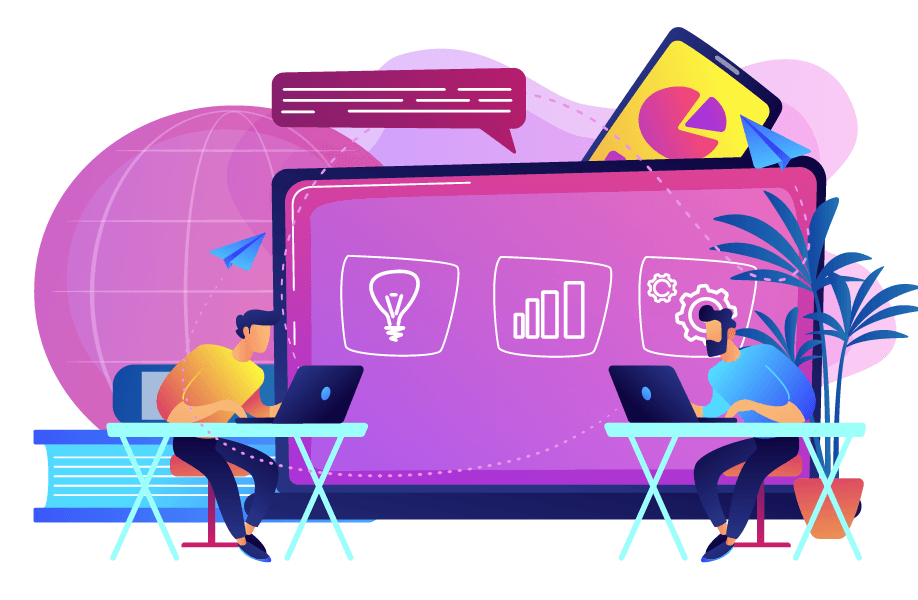
What to put in a knowledge base
- Annual reports, employee handbooks, organizational charts, and contact lists
- Onboarding materials, health-and-safety training, and certification training.
- Process documentation, software documentation, standard operating procedures, and checklists.
- FAQs, call scripts, and email templates that can help your customer support team better assist customers.
- Case studies, product information sheets, sales process information, and the latest sales numbers.
- Editorial calendars, social media post templates, and copywriting guidelines.
- Press releases, contact lists, and press images.
- Branding Handbook, and colour codes.
- Legal documents, contracts, release forms, policies, and regulatory documents.
You can find some excellent knowledge base examples below.
1. Optimizely
Optimizely’s knowledge base is huge, and it contains a community forum, a traditional knowledge base, an educational academy, certification programs, developer documentation, and a link to regular support.
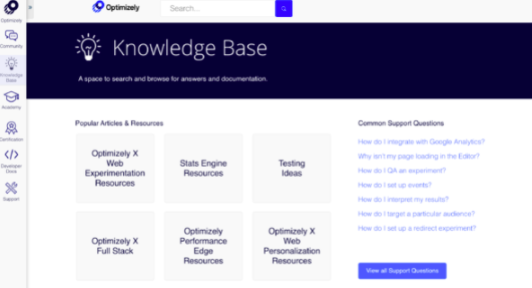
2. SurveyMonkey
When it comes to a knowledge base design template, SurveyMonkey has one of the best examples I’ve seen. It’s clean, beautiful, simple, and intuitive. I like the visually prominent search bar and the clear topic categories.

3. Microsoft
The next knowledge base example we have here does a great job of capturing and utilizing feedback.
The cool thing is that Microsoft has clearly done its research and analysis and has built the knowledge base homepage to reflect top user concerns.
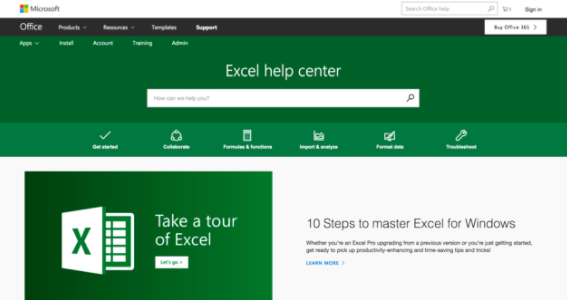
4. HubSpot
Hubspot knowledge base contains a bunch of different elements, including a documentation (for developers, designers, and general users), training (online, consulting, and classroom on a variety of topics), certifications, and a huge variety of community features (like forums, case studies, a customer blog, and more).
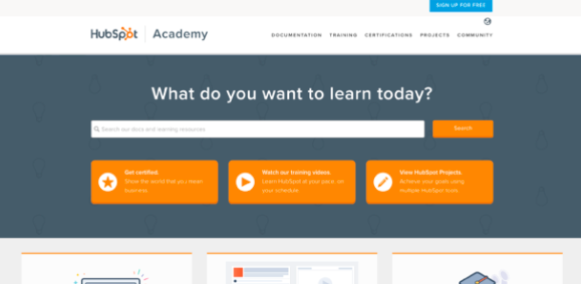
5. Moz
Moz is a stellar example of using knowledge base content not simply for reactive customer support, but for proactive customer education as well. They even refer to their knowledge base as a “learning centre,” which shows you how they’re framing their efforts.
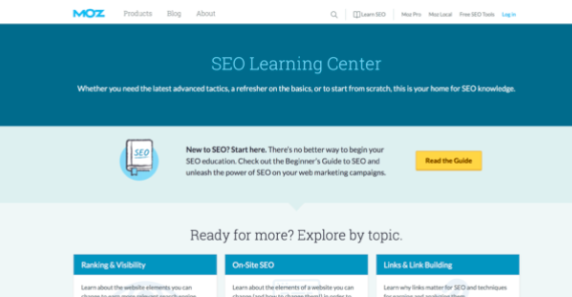

Key SaaS Metrics That You Should Know

Getting to know your customer is what separates the losers from the winners in the SaaS world.
Every successful business has a strong understanding and ability to around their
needs.
SAAS stands for “software as a service” and there are dozens of details to consider when reporting on key marketing and sales data for SaaS organizations.
Obviously, these metrics can be applied across all industries and company types and should be monitored on a regular basis. It’s important to put in place necessary reports and set benchmarks for each. Start by looking into your last year or quarter’s data to set a baseline to measure against, and use that baseline to evaluate if you’re growing — or stagnating — in the coming months.
Below there are key metrics as a bible for every SAAS sales and customer support team.

MRR
Monthly Recurring Revenue (MRR) is the amount of revenue that a company receives on a monthly basis. MRR is critical to understanding overall business profitability and cash flow for subscription companies. Once you’ve calculated the MRR for each customer, you can calculate the total MRR for your business.
MRR breakdowns are always helpful to look at your revenue growth. There are main 4 parts to divide your MRR and see an overall view of your business.
New MRR
New MRR is the monthly recurring revenue that’s generated from brand new customers. If you have 5 new customers in a month, they pay $100/month and the other your new MRR would be $500.
Expansion MRR
Monthly recurring revenue from your existing customers such as upgrade as a result of an upsell or cross-sell.
If 5 of your customers upgrade their subscription from $100 to $200/month, the expansion MRR would be $1000.
Contraction MRR
Contraction refers to the revenue lost from existing customers who have downgraded their subscriptions and takes into account both downgrade MRR and Churn.
Churn MRR
Churn MRR is the amount of monthly recurring revenue lost due to customer cancellations. It’s often calculated against MRR to see Churn MRR amount.
It’s often calculated against MRR to see Churn MRR and monitor the impact on business.
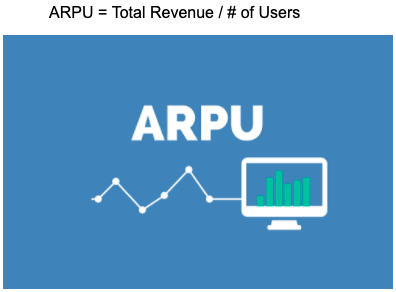
ARPU(Average Revenue Per User)
ARPU is known as average revenue per user and it is equivalent to total revenue, besides being very useful for all types of businesses, it’s most commonly used to analyze subscription-based organizations.
ARPU calculation is a great way for a business to track growth progress.
Calculating business ARPU is quite easy, It is simply taking the total revenue divide into a number of users in a given time period.
Starting with telecommunication companies such as AT&T, Verizon, and followed by cable companies such as Comcast, and nowadays on the scene for social media companies like Facebook, which is not subscriber-based.
Facebook’s average revenue per user in the third quarter of 2020 was $7.89.
Definition of a standard time period is a must. Most Saas companies calculate ARPU on a month-to-month basis. The total revenue generated during the standard time period should then be divided by the number of units or users.

CAC
Customer acquisition cost is the best estimate of the total cost of acquiring a new customer. It should usually include things like advertising costs, your marketers’ salary, your salesperson’s costs, etc. Divided by the number of customers gained.
It is a really useful number that will help you calibrate your investment and make sure you are making the right decisions for your growth.
Why is it important? If your customer acquisition cost is more than your income for a long enough period of time, you will be out of business.
An even better way to use CAC: Match with customer lifetime value (CLTV)
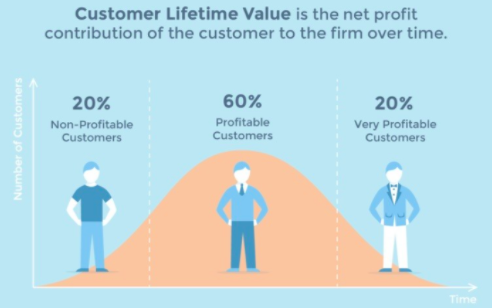
CLTV
Lifetime customer value (Customer lifetime value, or CLV) is the expected sum of all revenues a customer will generate for your business.
CLTV tells you how valuable a single customer is to your brand and gives you an idea of its overall value. This helps you understand how much you need to invest to keep the customer.
It is most cost-effective to increase your income from an existing customer than to acquire new customers. For this reason, you are expected to have a higher probability of success in business models and scenarios with higher lifelong customer value.
CLTV can be mentioned as the loyalty of customers to your product or services. You can find some tips to increase your CLTV.
- Developing digital channels
- Using existing channels more effectively
- To improve the ability to obtain analytical data to obtain more comprehensive information about customers,
- To produce much higher quality content for customers
- Create a high-quality customer experience with after-sales service
- By mobilizing the employee as brand representatives
- Using all kinds of relevant communities.
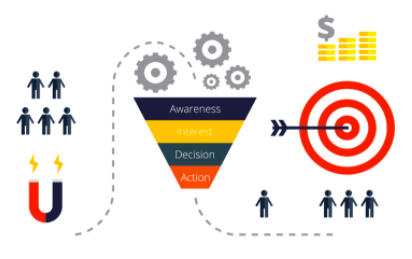
Conversion Rate
The conversion rate is the number of conversions divided by the total number of visitors. It can be an e-commerce website or subscription-based SaaS.
You are monitoring 100 visitors on an average per day. And out of these, about 20 people buy your product or service daily. So your conversion rate, which is the ratio of people becoming your customers to the total number of visitors on your website, is about 20%.
A conversion can refer to any desired action that you want the user to take. This can include anything from a click on a button to making a purchase and becoming a customer.
- Become a Member of the Website
- Navigating the Product or Services Pages
- Filling in a Contact Form
- Becoming a Mail Subscriber to Your Website
- Viewing Campaigns Pages

Churn Rate
Customer Churn
Maintaining the existing customers is equally important as driving new customers to your business. It is one of the most important metrics in tracking the vitality of your business.
Customer churn measures the rate at which customers cancel their subscription to your service. It can give you a better understanding of customer retention by specific insight on activity across specific time periods.
When tracking churn, be sure to identify the personas of these churned customers as well as the industries that can help to light on why they failed to renew.
Customer churn indicates how good you are at retaining existing customers.
Revenue Churn
Alongside customer churn, every SaaS companies have to measure revenue churn to evaluate the outside impact.
Revenue Churn is used to looking at the rate of monthly recurring revenue (MRR) is lost as a result of churned customers and downgraded subscriptions.
Some customers may be generating more revenue than others if the subscription price is depending on variables such as users, additional tools, or features, the customer churn rate might be different than the revenue churn rate.
Revenue churn indicates how good you are at retaining customer revenue.

CPA (Cost Per Action)
Cost for every action. Targeted action is usually charged on a fixed or percentage basis. CPA is one of the most favourite metrics of marketers. Cost per action is a digital advertising payment model that allows charging an advertiser only for a specified action taken by a prospective customer.
All actions covered by the model are directly related to some type of conversion, ranging from a newsletter sign up to a link click or sale and determined by the advertiser.
CPA is calculated by dividing Total Cost by the Total Number of Actions.
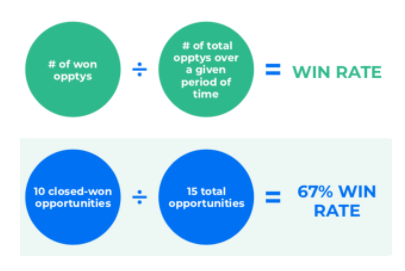
Win Rate
One of the critical elements in determining your sales velocity is your Win Rate. Win rate is the percentage of prospects that became customers divided by the total number of opportunities in the pipeline.
If you don’t know how many opportunities to pursue it is hard to build a sales strategy or know what marketing needs to deliver into the funnel.
In this case, the results of the four sales cycles are as follows:
- Deal A: $20,000 – WIN
- Deal B: $10,000 – WIN
- Deal C: $40,000 – LOSS
- Deal D: $30,000 – LOSS
Deal A and Deal B are won, and Deal C and Deal D are lost. Win two. Lose two. That is a 50% Win Rate.
However, when we look at the values of the deals, the result becomes drastically different. A and B valued at $30,000, where C and D together to a value of $70,000. On a value basis, your win rate is 30%.

LVR ( Lead Velocity Rate)
The lead velocity rate calculates the real-time growth of qualified leads month over month. It’s one of the most important metrics to predict future revenue.
Lead velocity rate measures the efficiency and effectiveness of the company’s sales pipeline. LVR is one of the most critical key performance indicators (KPIs) of SaaS companies. Generally, companies use lead velocity rate to assess the efficiency of its sales, as well as its growth potential.
Lead velocity rate is calculated as a percentage change in the number of qualified leads in the present month relative to the previous month.
“hit your LVR goal every month… and you’re golden. And you’ll see the future of your business 12-18 months out, clear as can be.”
Jason Lemkin, SaaStr
MQL
Marketing Qualified Leads
Prospects, that they can be customers with their interactions on the website or other channels, and they show interest in the content you offer (template, white book, presentation, report … etc.). For example; You can fill out a web form on your website, download content from your website, or subscribe to a newsletter.
Each of the interactions is considered as a metric and helps determine where the visitor is in the purchasing cycle.
SQL
Sales Qualified Leads
SQL is a potential customer that has an interest in your service or product, already met the criteria for MQL, and going forward has shown a high likelihood of purchasing by offering a trial, demo, and special solutions to the MQLs at the decision stage.
Customers in this group; are those who have high lead scores and come to the contract stage, they must be followed carefully to be turned into customers.
PQL
Product Qualified Lead
PQL is more likely to return to a sale than MQL and the sales cycle is shorter.
PQL is not the same as MQL, PQLs is based on using the product and experiencing your product through the free trial version.
Lead Scoring
Lead scoring is a common sales and marketing term for ranking leads in order to determine their sales-readiness. You can score leads based on the interest they show in your business, their current place in the buying cycle, and their fit in regards to your business.
Lead scoring is to identify which leads are ready to move to sales and which leads require further nurturing. No lead should be left behind.

LimTC Leads at GoodFirms by Bridging the Connection and Cultural Diversity Between the Outsourcing Firms Globally
The ability to use problem-solving skills and techniques to improve clients’ business project outcomes endows LimTC as one of the best BPO service providers at GoodFirms.
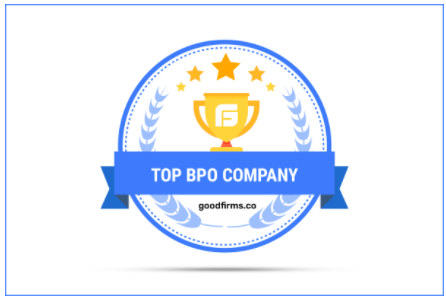
Incorporated in 2017, LimTC manages costs, training manpower, and achieves the desired results for client’s businesses. The professionals understand that it can be daunting for any small or medium-sized company to walk the tight rope between managing costs, training the workforce, and obtaining the desired results.
LimTC’s expert team knows the importance of prompt service or skilled technical support in building clients’ business and growing their customer base.
Besides this, the skilled and trained professionals help clients in marketing, sales, strategy, customer assistance, onboarding, and a few others by extending their limits to exceed clients’ expectations.
LimTC’s professionals serve as an extended team, behind the scenes, working round the clock to give clients’ business a boost of added power and performance.
Moreover, the trained and experienced professionals work collaboratively to maximize clients’ potential and achieve aspired outcomes, adapted and customized to universal markets.
GoodFirms, an online platform, encourages service seekers and providers to partner with many firms based on three significant aspects: Quality, Ability, and Reliability. After a careful evaluation of these businesses based on the fixed parameters, they are added to the GoodFirms directory.
Similarly, GoodFirms also accredited LimTC. They affirmed that the agency flourishes with its excellent service offerings in BPO and customer services category, respectively, at GoodFirms.
The below-mentioned summary of their services will give a better idea of LimTC, which is as follows:
BPO Services:
At LimTC, the professional team gives clients’ business a competitive edge over their counterparts by keeping the drive going with ongoing training and advancement, technical inclines, and induction of new skill sets, ad-libbing at par with current trends and standards.
Moreover, LimTC offers premium offshore staffing services to render clients’ back-office work. The professional team recognizes the value of a dedicated and detail-oriented unit, which is why the company aims to provide clients with the best-skilled professionals within clients’ budget.
From offshore personal virtual partners, data processing services, offshore real estate services, accounting outsourcing, and a few others, LimTC provides clients with all. Outsourced back office services can save clients a lot of money and time, as it lessens a lot of tedious toiling off clients’ hands. Saving costs means increased revenue, allowing clients to develop their business further!
LimTC further acts as a backbone of any successful business that needs to be tended with experience and expertise. It provides payment processing services to supplier management for unhindered general business functions, technical support, and manual intervention.
Thus, backed by a trained team that is adept at bridging the gaps between the front and back office to secure smooth operations on a day-to-day basis endows LimTC to grab a secure position amongst the top BPO companies listed at GoodFirms.
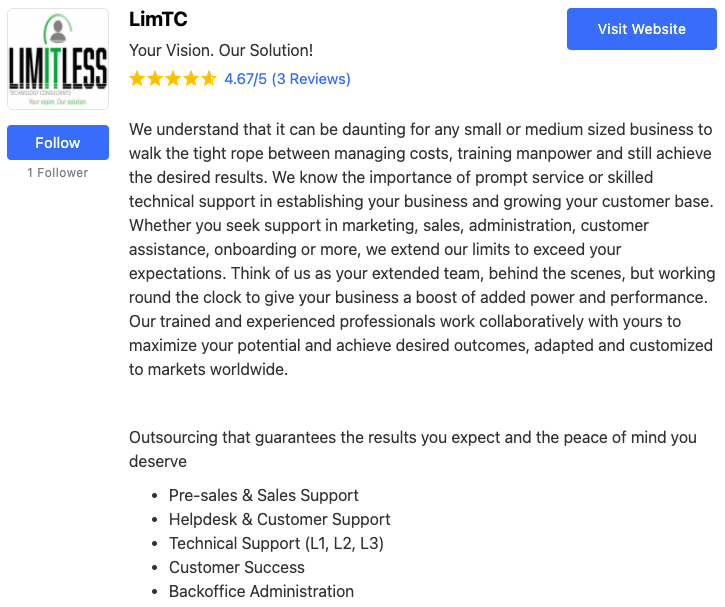
The review given by clients at GoodFirms reflects the capabilities of the experts at LimTC.
“LimTC becomes part of our team, never had any issue with communication. They are always available and very responsive to any requirements. Our trust in their team has allowed us to focus on the development of our platform and deliver better every day.”
“They have taken a load off my shoulders, they surprised me with running the project smoothly and finding solutions to any problems they meet. Now I can rely on them and focus on my core functions and my other projects.
I wanted support to launch my project in time and a team to rely on to deliver excellent service to my customers. My customers are mainly C level and to meet their expectations and deliver excellent service is a bit difficult, however, they were able to make that happen.”
“They communicate well, whether by email or phone. They document everything and move fast.”
Customer Services:
LimTC furnishes outsourced customer support services customized to suit clients’ business’ specific necessities. The dedicated professional team holds strong communication skills and a pleasing personality to handle all clients’ customer support requirements via receiving & making calls and emails.
Customer support plays an essential role in guaranteeing clients’ patrons’ satisfaction by ensuring they get the assistance they demand by providing them solutions to whatever predicaments they may encounter.
Moreover, LimTC believes that good customer support service boosts brand loyalty and awareness, as content customers are more likely to suggest a particular brand to their family and friends after a positive experience.
In addition to this, satisfied customers tend to give great feedback, enhancing clients’ brand image. With LimTC, clients can count on its outsourced team’s ability to cater well to their users and offer them the help they need.
Furthermore, LimTC’s expert team will team up with clients to comprehend their business capacities and destinations from the start. The skilled group at LimTC will strive to understand the clients’ organization’s procedures and activities to provide them with strategies that focus on IT operations and create revenue-generating ideas.
Thus, expertly handling customer issues and providing support solutions efficiently with technical competence endows LimTC to tap into the list of best companies for customer services at GoodFirms.
The review obtained at GoodFirms confirms the quality of service offering rendered at LimTC.

Washington, D.C.-based GoodFirms is an innovative B2B Research and Reviews Company that extensively combs the market to find the BPO and customer support services agencies amongst many other technology firms that offer the best services to their customers. GoodFirms’ extensive research process ranks the companies, boosts their online reputation and helps service seekers pick the right technology partner that meets their business needs.

Which Audio Chat App Is For You?
There is a new boom happening right now in social media, the drop in audio chat experience.
You may have heard about the ClubHouse app and now a new app TwitterSpaces which is actually a copy of ClubHouse. We have compared these 2 apps’ main differences and sharing with those who like to stay up to date on new social media space.
After reading the previous paragraph, if you have considered trying out one of these new apps you will probably choose Clubhouse since copies have the stereotype to be worse than the original. But don’t be too quick to judge. Let’s look at some numbers.
TwitterSpaces has 192 million daily users over ClubHouses 2 million daily active users.
Interesting right?

These are the key differentiations.
Clubhouse is an only iOS, only audio, and only by invite app. Basically what it means is you can enter an audio chat room by invite only. It gives you the actual experience of a clubhouse. It’s like zoom without video or any audio chat, a team speak app with speakers and listeners.
Clubhouse has a calendar with upcoming events for you, that the app assumes you will be interested in listening to, based on who you are following.
You can easily find and connect with your friends on the app.
Clubhouse app is very well designed and polished in terms of functionality and discoverability.
But users report that “it feels kind of sweaty” because a lot of people are on there trying to network, trying to link and build. It feels more like a Linkedin profile with a long list of accomplishments and acculturations.
But this type of platform caused such a hype among its users that even Mark Zuckerberg is working on his own version of ClubHouse for Facebook. However, there are more apps like this to follow in the near future.

Here’s your guide on TwitterSpaces. Twitter started testing Spaces back in December 2020 and they are now in the Beta version. So there is much more to come including new features and updates.
Spaces is a new way to have live audio conversations directly in the Twitter app.
Unlike the ClubHouse, TwitterSpaces are not private and available on iOs and Android. They are public and anyone can join to listen even if they do not follow you on the app.
You can easily block or report users to moderate content better.
TwitterSpaces give the ability for up to 10 users to come together as speakers and create an audio-only chat experience. It even has a live transcription future that lets you read the conversations even if you can’t listen because you can’t have your volume up or you forgot your headphones.
TwitterSpaces is almost like talking to people in real-time via voice notes. It lets you join, listen, and speak. Reviews of users show that they seem to enjoy it and think spaces is a more exciting product than ClubHouse.

Ultimate Outsourcing Location, UKRAINE
“Outsourcing is the business practice of hiring a party outside a company to perform services and create goods that traditionally were performed in-house by the company’s own employees and staff. Outsourcing is a practice usually undertaken by companies as a cost-cutting measure. As such, it can affect a wide range of jobs, ranging from customer support to manufacturing to the back office”
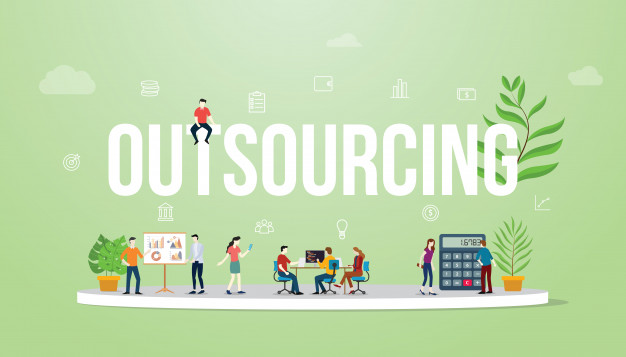 Source:https://en.wikipedia.org/wiki/Outsourcing
Source:https://en.wikipedia.org/wiki/Outsourcing
Benefits of outsourcing include the following:
- Increased Efficiency
- Allowing you to focus on the core competencies
- Save on Infrastructure and Technology
- Access to Skilled Resources
- Time Zone Advantage
- Staffing Flexibility
- Reduce Operational Risks
Outsourcing Areas
- Customer service (information systems, field services, telephone customer service, etc.)
- Sales-marketing (telemarketing, advertising)
- Record Management and Archive Storage
- Administrative affairs (written documents, files, photocopy, etc.)
- Human resources management (recruitment, training, remuneration, performance evaluation, consultancy, career management, human resources information system, etc.)
- Information technology (maintenance, repair, training, application, software development, etc.)
- Accounting-finance (payroll, taxation, purchasing, and general accounting transactions)
- Logistics-shipping (warehousing, mailing-distribution, information systems, and operations)
- Facility Management (operation, maintenance, repair)
Why Ukraine Is the Best Location For Outsourcing?
The main things you want to look for when determining the best countries to outsource is high-quality educational IT infrastructure, and the ability to communicate multilingual, sustainable payroll, easy travel geolocation, cultural fit with a similar working calendar.
Ukrainian Universities are well-known for their well-established higher educational institutions, giving their students quality European education and a possibility of building a successful career in their own country. That being said, Ukraine becomes the most ideal location for outsourcing over other popular destinations. 80% of IT-related workers speak English fluently so no communication barriers there. Other benefits of outsourcing to Ukraine include a time zone that partially overlaps with US and UK times and a similar working culture that prizes challenge and competition. Besides great recognition in the tech domain, BPO companies provide excellent value for money.
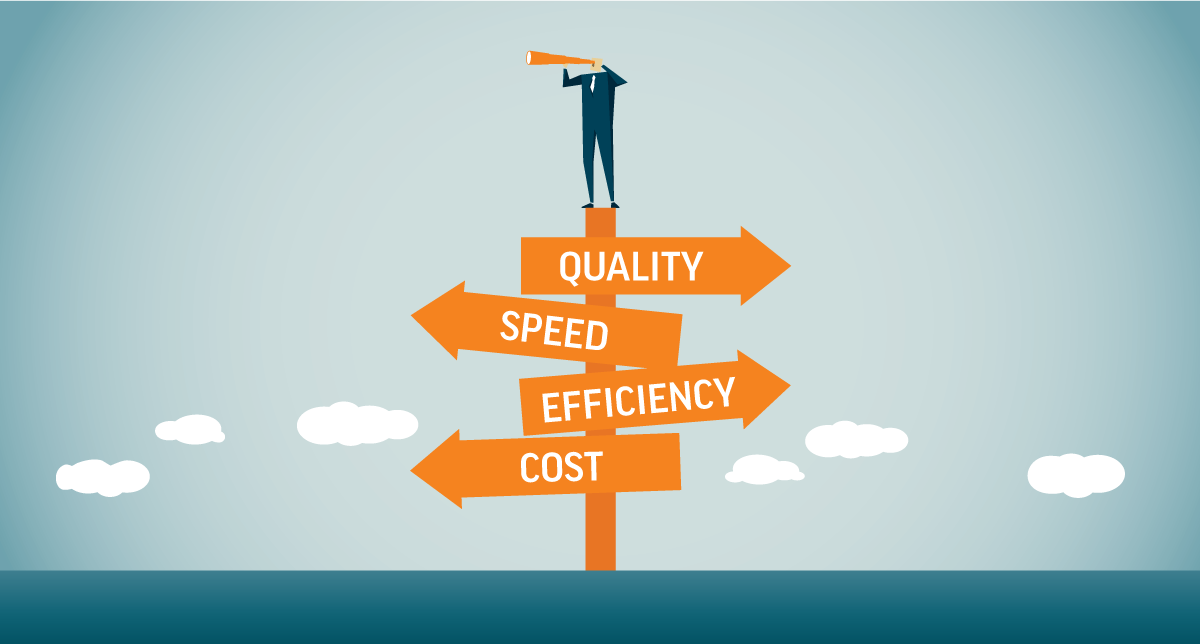
You can see the number of industry-leading companies who trusted the Ukrainian industry and established their centers in Ukraine, such as:
- Google;
- Microsoft;
- Apple;
- Magento;
- Skype;
- Violin Memory.
The key secret factor of choosing the place for outsourcing, the extent of the evolving startup sector since it’s a great indicator of IT progress in the country.
The nation’s mentality and cultural background is another important factor to consider when choosing an outsourcing destination. Sharing identical values and worldviews and be a great accelerator for the workflow between the customer and the outsourcing vendor.
Ukrainians share the same values as Central Europe and the USA. Very hard-working and responsible, motivated, and are constantly willing to endure new challenges. Ukrainians are keen on teamwork and always help each other.

Ukraine is currently the leading outsourcing destination in Eastern Europe, and the country has earned this status for a good reason.
It has a huge pool of experienced and dedicated experts who are willing to work and build trustworthy relationships with their clients. Ukraine is the most convenient option for both European and American customers.
